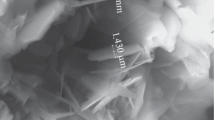+
-γ coincidence measurement, which has been applied to in-situ examinations of microstructural evolution processes during the fatigue of copper single crystals, is described. Since no sandwich-type geometry is required, it is applicable to all specimen geometries commonly used in materials testing and to the non-destructive testing of engineering parts in service. As a radioactive source 72Se generates the positron-emitting 72As, which provides two positron spectra with maximum energies of 2.5 MeV and 3.3 MeV and a prompt γ quantum of 835 keV. The positrons emitted in the direction towards the specimen pass through a fast plastic scintillator and produce a scintillation signal, thereby losing about 150 keV of their energy. This signal serves as a start signal for the positron-lifetime measurement and is measured in coincidence with the subsequent 511 keV annihilation quantum. After passage through the plastic scintillator the remaining positron energy is still high enough to penetrate deep into the material and to allow for real bulk examinations. The prompt γ quantum may serve as an on-line control of the stability of the electronic system which will be useful under non-constant service conditions in a proposed field application.
Similar content being viewed by others
Author information
Authors and Affiliations
Additional information
Received: 8 January 1997/Accepted: 14 March 1997
Rights and permissions
About this article
Cite this article
Hansen, S., Holzwarth, U., Tongbhoyai, M. et al. A mobile positron-lifetime spectrometer for field applications based on β+-γ coincidence . Appl Phys A 65, 47–52 (1997). https://doi.org/10.1007/s003390050540
Issue Date:
DOI: https://doi.org/10.1007/s003390050540




